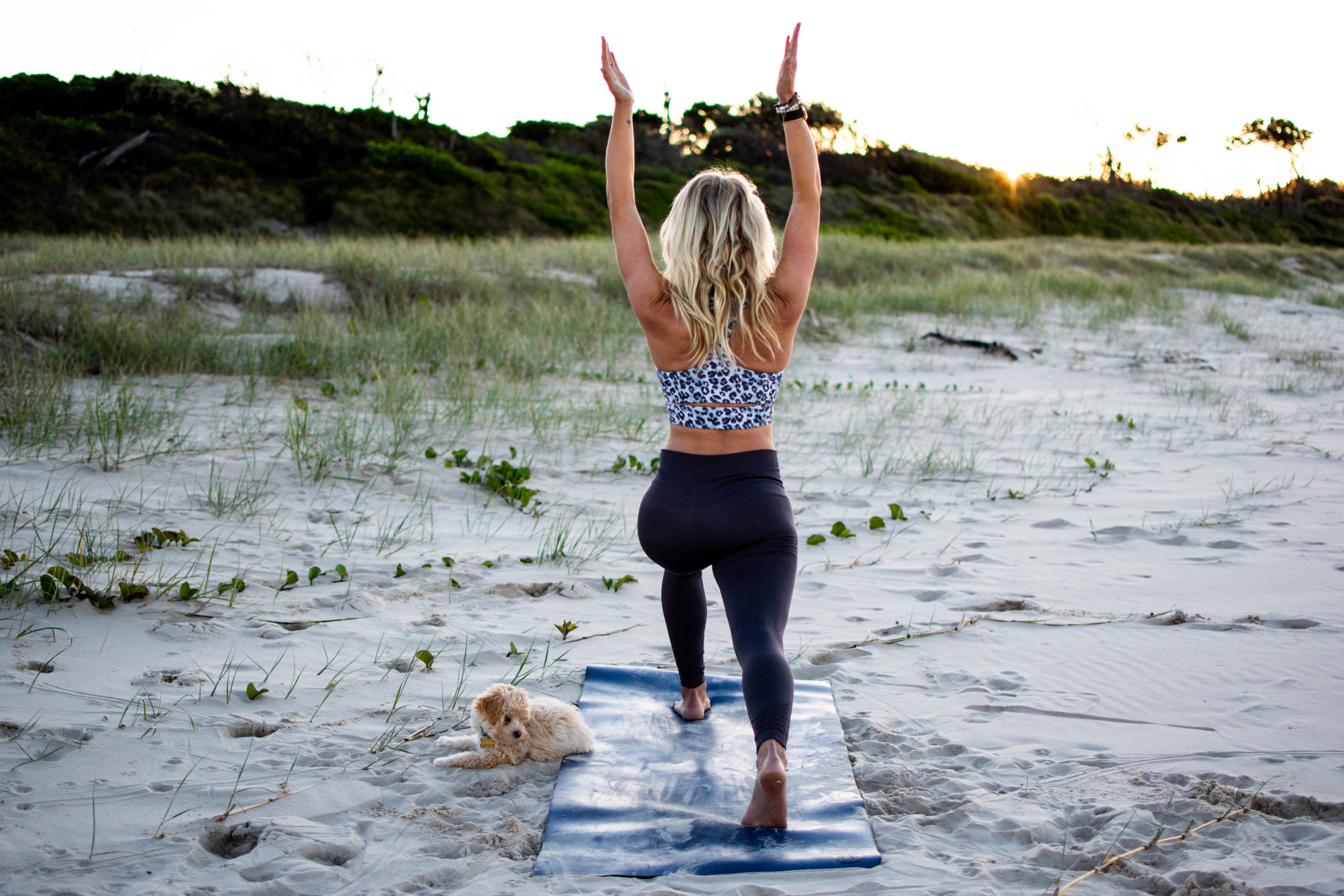Whether you’re an avid yogi, dabble with a few moves from time to time, or have never tried a downward dog, chances are you’ve heard of the incredible impact that yoga can have on your body + mind. But did you know the insane benefits of performing a daily sun salutation? We interviewed yoga instructor and goddess Claudia Matles to find out more.
Sun Salutations are a set of postures with a beautiful, symbolic history, performed in a flowing sequence and often used to warm up at the beginning of yoga practice. But, as Matles explains, this sequence can be much more than just a warmup.
“Sun Salutations on their own are an effective cardiovascular workout,” says Matles. She points to International Journal of Yoga findings that regular Sun Salutations promote better lung function, respiratory pressure and resting cardiovascular parameters.
Surya Namaskar, the sequence’s Sanskrit name, also helps “lengthen and strengthen,” Matles says. She lists burning calories, relaxation, preventing fatigue, promoting a calm nervous system, and improving tone and flexibility among Sun Salutations’ other mental and physical benefits.
Ready to try it?
Matles has broken down the sequence for us, describing Sun Salutations in easy-to-understand steps and highlighting how each move serves the body. Before you begin, watch Matles perform a Basic Sun Salutation to see how these postures flow together:
Now it’s your turn.
BEGIN WITH MOUNTAIN POSE TO UPWARD SALUTE
Stand at the top of your mat with feet together, hands in prayer at your heart (Mountain Pose). Inhale as you sweep your arms up overhead in a wide arc, bringing your hands together in prayer over your head. Gaze up at your hands if comfortable; otherwise, look straight ahead.
BENEFITS: Promotes good posture, strengthens legs and core, regulates breathing, tones core and hips.
FORWARD FOLD
Exhale while circling the arms down. Place hands on the floor next to your feet, bending your knees slightly as needed. Allow your head to hang loosely.
BENEFITS: Lengthens spine and stretches the back and hamstring muscles.
HALF FORWARD FOLD
Keeping your hands on the mat, inhale and arch your back to look up and forward.
BENEFITS: Strengthens lower back and core, lengthens spine, stretches backs of thighs and glutes.
PLANK POSE
Exhale as you move into Plank Pose: your hands and toes on the mat, hips and shoulders at the same height. Continuing to exhale as you lower yourself to the ground as if you’re starting a push up.
BENEFITS: Strengthens entire body, especially arms, upper back and core.
UPWARD-FACING DOG
From the lowered push-up position, inhale to Upward-Facing Dog by pressing hands into the mat and lifting the chest while keeping your hips on the mat.
BENEFITS: Strengthens entire body, opens chest and aligns the spine.
DOWNWARD-FACING DOG
Exhale to Downward-Facing Dog, letting your body become an upside down V. Remain in this pose for five breaths.
BENEFITS: Builds upper body strength, opens chest and stretches entire back of the body.
Matles’ Basic Sun Salutation transitions from Downward-Facing Dog back to Mountain Pose, but her Advanced Sun Salutation includes Warrior 1 at this point, as you can see below:
WARRIOR 1
At the last exhale of Downward-Facing Dog, step your right foot between your hands. Make sure your right knee is directly over the heel, while your left thigh stays parallel to the floor. Inhale, raising both arms to the sky as you look forward or up toward your hands. Hold this posture for five breaths.
BENEFITS: Builds lower body strength, lengthens spine, opens chest, stretches legs and groin.
RETURN TO MOUNTAIN POSE AND REPEAT
Pull your back foot in. Inhale as you stand, circle your arms and bring your hands together for a Mountain Pose. Repeat the entire sequence, five to ten times a day, alternating which foot goes forward for Warrior 1.
You Can Do This
Eventually, poses can be performed in quick succession with one breath per posture. But Matles suggests holding positions for longer — for example, staying in Downward Dog for five breaths as described above — as you become comfortable with the routine.
The best part?
“It’s an all-in-one,” says Matles, “and can be practiced anywhere and by anybody at all levels.” All you need is a mat and a flat surface.

Why You Should Try This Yoga Sequence Every Single Day
VIEW THE COMMENTS